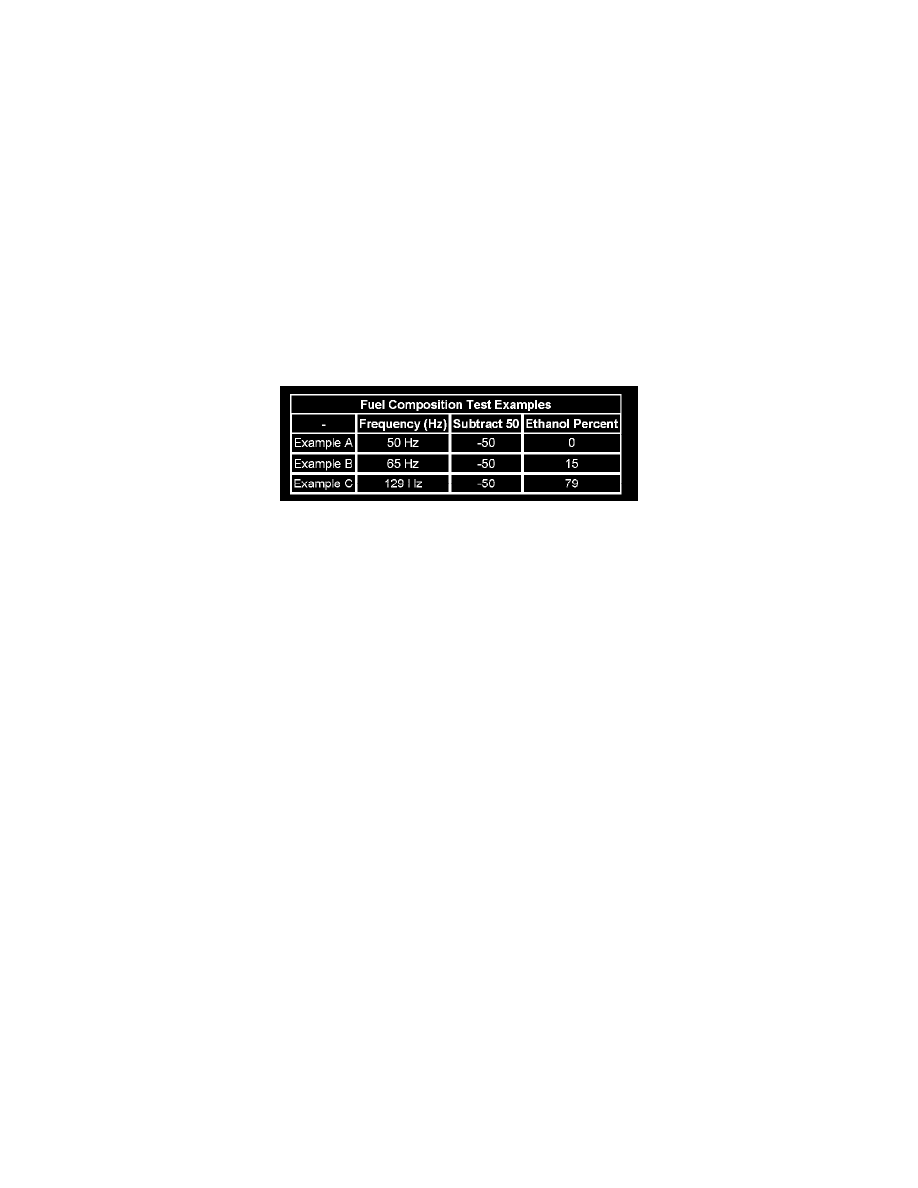LaCrosse V6-3.6L (2007)

Fuel: Testing and Inspection
Alcohol/Contaminants-In-Fuel Diagnosis (With Special Tool)
Alcohol/Contaminants-in-Fuel Diagnosis (w/Special Tool)
Description
Water contamination in the fuel system may cause driveability conditions such as hesitation, stalling, no start, or misfires in one or more cylinders. Water
may collect near a single fuel injector at the lowest point in the fuel injection system, and cause a misfire in that cylinder. If the fuel system is
contaminated with water, inspect the fuel system components for rust or deterioration.
Ethanol concentrations of greater than 10 percent can cause driveability conditions and fuel system deterioration. Fuel with more than 10 percent
ethanol could result in driveability conditions such as hesitation, lack of power, stalling, or no start. Excessive concentrations of ethanol used in vehicles
not designed for it may cause fuel system corrosion, deterioration of rubber components, and fuel filter restriction.
Test Procedure
1. Test the fuel composition using J 44175 Fuel Composition Tester and J44175-3 Instruction Manual.
2. If water appears in the fuel sample, clean the fuel system. Refer to Fuel System Cleaning. See: Service and Repair
3. Subtract 50 from the reading on the DMM in order to obtain the percentage of alcohol in the fuel sample. Refer to the examples in the Fuel
Composition Test Examples table.
4. If the fuel sample contains more than 15 percent ethanol, add fresh, regular gasoline to the vehicle's fuel tank.
5. Test the fuel composition.
6. If testing shows the ethanol percentage is still more than 15 percent, replace the fuel in the vehicle. Refer to Fuel Tank Draining.
